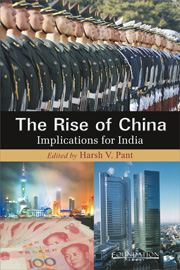9 - The Tibet Conundrum in Sino-Indian Ties
from Part III - China's India Policy
Published online by Cambridge University Press: 05 June 2012
Summary
The Tibet question in Sino-Indian relations is partly an unsettled inheritance from the Raj and partly an issue of persistent immediacy, one that has been able to renew itself and bedevil those relations into the present day. It has precipitated diplomatic and even military hostilities and still has the potential to claim lives in periodic (albeit low-level) border clashes. The question centres around two primary elements: the status of Tibet and the lack of common agreement on the border between the People's Republic of China (PRC) and India (i.e., the Indo-Tibetan border). One might think it would not be too difficult for India and China to isolate the two elements and deal with them separately, particularly since India has long accepted Tibet's status as a part of China. In truth, however, the matter of Tibet's status is inextricably linked to the border issue, which is rooted in the 1914 Simla Convention by which India and Tibet agreed to a frontier that, in the eastern sector, ran along the crest of the Himalayan range. And the force of the Simla agreement is dependent on recognition of the treaty-making authority of Tibet's traditional government. In 1950, however, with Tibet under attack from China, India acted to block United Nations (UN) action over Tibet by supporting the proposal of the United Kingdom in the General Assembly that no action be taken, in part because the British held that the status of the Tibetan government—the very government that had signed the Simla Treaty with India—was unclear.
- Type
- Chapter
- Information
- The Rise of ChinaImplications for India, pp. 218 - 232Publisher: Foundation BooksPrint publication year: 2012
- 1
- Cited by



